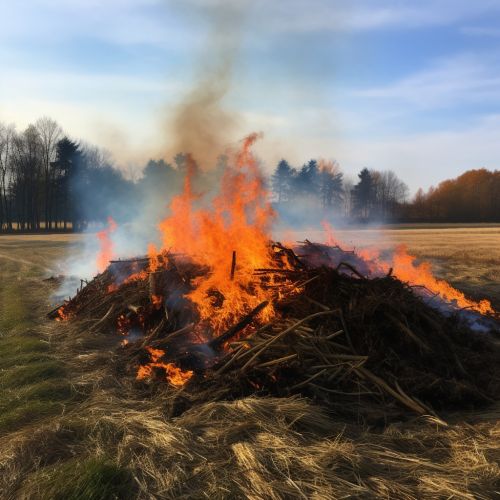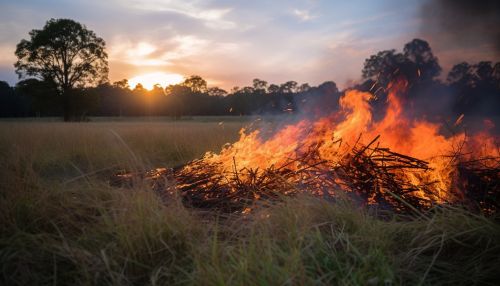Biomass burning
Introduction
Biomass burning refers to the combustion of organic materials, such as wood, crop waste, and animal manure. This process is used for various purposes, including energy production, land clearing, and waste disposal. Biomass burning is a significant source of greenhouse gases, particulate matter, and other pollutants, which can have significant impacts on the environment and human health.
Types of Biomass Burning
There are several types of biomass burning, each with its own unique characteristics and impacts. These include:
- Agricultural Burning: This involves the burning of crop residues and waste products to clear land for new plantings. It is a common practice in many parts of the world, particularly in developing countries where modern farming equipment is not readily available.
- Forest Fires: These are natural or human-induced fires that occur in forested areas. They can be a significant source of carbon dioxide and other greenhouse gases.
- Residential Burning: This involves the burning of wood, coal, and other biomass fuels for heating and cooking purposes. It is a common practice in many parts of the world, particularly in rural areas where access to electricity and natural gas is limited.
- Industrial Burning: This involves the burning of biomass for energy production in power plants and other industrial facilities. It is a growing practice in many parts of the world as a means of reducing reliance on fossil fuels.


Environmental Impacts
Biomass burning has several environmental impacts, including:
- Air Pollution: Biomass burning releases a variety of pollutants into the atmosphere, including particulate matter, carbon monoxide, nitrogen oxides, and volatile organic compounds. These pollutants can have significant impacts on air quality and human health.
- Climate Change: Biomass burning is a significant source of greenhouse gases, particularly carbon dioxide. This contributes to global warming and climate change.
- Soil Degradation: The ash produced by biomass burning can lead to soil degradation, reducing its fertility and productivity.
- Biodiversity Loss: Fires caused by biomass burning can lead to the loss of plant and animal species, reducing biodiversity.
Health Impacts
The pollutants released by biomass burning can have significant impacts on human health. Exposure to these pollutants can cause a range of health problems, including respiratory diseases, cardiovascular diseases, and premature death. The health impacts of biomass burning are particularly severe in developing countries, where access to healthcare services is often limited.
Mitigation Strategies
Several strategies can be used to mitigate the impacts of biomass burning. These include:
- Improved Farming Practices: This involves the adoption of modern farming practices that reduce the need for agricultural burning. This can include the use of machinery for land clearing and the adoption of sustainable farming practices.
- Alternative Energy Sources: This involves the use of alternative energy sources, such as solar and wind power, to reduce reliance on biomass for energy production.
- Improved Stove Technology: This involves the use of improved stove technologies that reduce the emissions from residential burning. This can include the use of clean cookstoves and improved heating systems.
- Regulation and Enforcement: This involves the implementation of regulations and enforcement measures to control biomass burning. This can include restrictions on agricultural burning and the enforcement of air quality standards.
Conclusion
Biomass burning is a complex issue with significant environmental and health impacts. While it is a vital source of energy for many people around the world, it also contributes to air pollution, climate change, and other environmental problems. Mitigating the impacts of biomass burning requires a combination of improved farming practices, alternative energy sources, improved stove technology, and regulation and enforcement.
